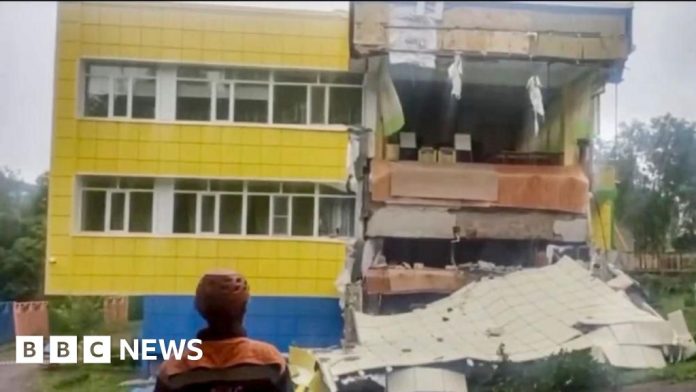BBC News
A powerful earthquake off the coast of Russia has triggered tsunami warnings across the Pacific, prompting emergency evacuations from Russia’s far-east to northern Japan, Hawaii and the US west coast.
The 8.8 magnitude quake struck near Russia’s far-eastern Kamchatka Peninsula at 11:25 local time on Wednesday (23:00 GMT on Tuesday).
It is one of the 10 most powerful earthquakes ever recorded, the US Geological Survey said. However there have been no initial reports of severe damage or injury.
Thousands of people in nations across the Pacific evacuated to higher ground, but in many regions, tsunami warnings have been downgraded.
On the west coast of the United States, waves continue to roll through, however, heading south.
Crescent City in northern California recorded waves of up to 1.09m (3.6ft), according to the National Tsunami Warning Centre.
Further south, there were tidal surges of up to 0.7m in San Francisco.
And even further south, the Los Angeles weather service said that Port San Luis was seeing a “rapid and damaging surge, going from low to high tide”.
In Hawaii, where thousands of people along the coast fled for higher ground, waves of 1.2m (4ft) hit Oahu, and even larger ones of 1.7m struck Maui.
Governor Josh Green did not hold back when he warned residents: “It is not a regular wave. It will actually kill you if you get hit by a tsunami.”
However, a few hours later he reported that: “So far we have not seen a wave of consequence”.
The tsunami warning for Hawaii was downgraded to an advisory level by the Pacific Tsunami Warning Centre (PTWC), meaning there is the potential for strong waves, currents and minor flooding, but a major tsunami is no longer expected.
The Hawaii Emergency Management Agency director, Stephen Logan, said those evacuated may now return home but urged people to be careful, drive slowly, and watch for flooding.
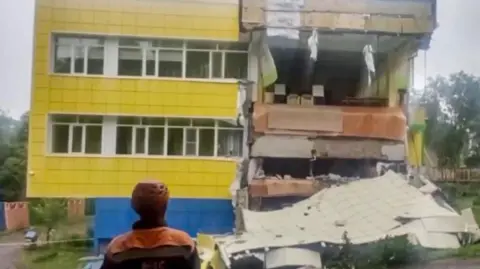 Russian Emergencies Ministry via EPA
Russian Emergencies Ministry via EPA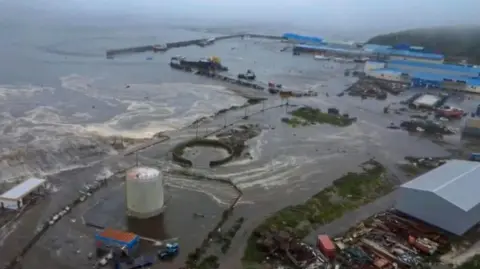 Geophysical Survey Of The Russian Academy Of Sciences via EPA
Geophysical Survey Of The Russian Academy Of Sciences via EPAIn Russia, where the quake originated, tsunami waves of up to 5m (16ft) struck areas including Severo-Kurilsk, a port town of about 2,000 people. No major injuries or damage have been reported and officials have now lifted the tsunami warning for Kamchatka.
The Sakhalin region declared a state of emergency in the northern Kuril islands, where the power grid was shut down after it was damaged by the quake.
Kamchatka Governor Vladimir Solodov described it as the most powerful earthquake the region has experienced in decades. At least six aftershocks followed, including one measuring 6.9.
In Japan, thousands were woken by tsunami sirens, with waves more than a metre high hitting the Pacific coast, particularly in Iwate prefecture where nearly two million people were told to evacuate.
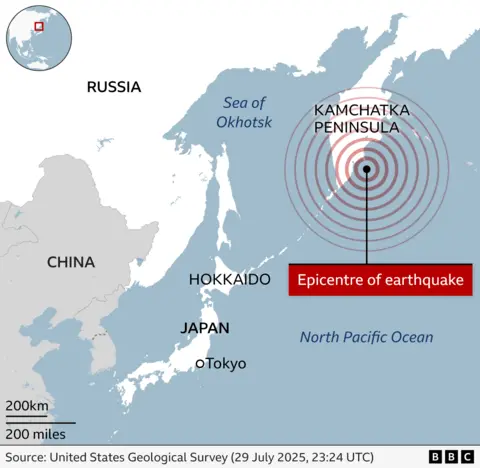
Authorities have since downgraded the tsunami warning to advisory for many areas, spanning from the north of Tokyo down to Wakayama in the south-west.
Japan’s Prime Minister Shigeru Ishiba said there was no confirmation of any damage so far.
At the embattled Fukushima nuclear plant, all 4,000 workers were evacuated, but the plant’s operators said there were no “abnormalities” detected.
In March 2011, the plant was hit by a devastating 9.0-magnitude earthquake and tsunami, leading to a nuclear meltdown.
British Columbia, in Canada, has issued a tsunami advisory for most coastal areas, where residents have been told to avoid the ocean and await the all-clear.
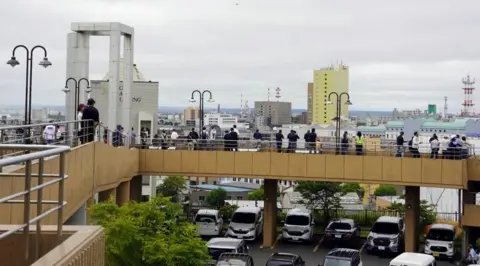 Reuters
ReutersIn French Polynesia, officials raised predicted wave heights for Nuku Hiva in the Marquesas Islands to 4m, with smaller waves of just under a metre expected on surrounding islands.
Tsunami alerts remain in place for Papua New Guinea, the Solomon Islands and Vanuatu and coastal residents have been told to evacuate to higher ground.
China’s alert for Zhejiang Province and Shanghai has been lifted, with no reported damage. The Philippines has also cancelled its alerts.
Taiwan’s advisory remains active.
Smaller tsunami wave activity between 1m-3m is possible along some coasts of Chile, Costa Rica, Ecuador, Australia, Colombia, Mexico, New Zealand and Tonga.
In Peru, officials have issued a tsunami warning and are keeping “constant surveillance” on the situation.
The tsunami warning was triggered by a powerful earthquake which struck about 126km (78 miles) from Petropavlovsk-Kamchatsky, Russia, at a depth of 18km, the United States Geological Survey reported.
The agency said that the tremor was tied as the sixth most severe quake in history, with the 2010 earthquake in Biobío, Chile, and the 1906 earthquake in Esmeraldas, Ecuador.
Are you in any of the affective areas? If it is safe to do so, please get in touch.

